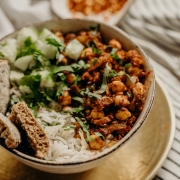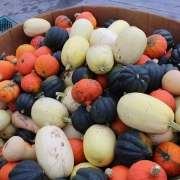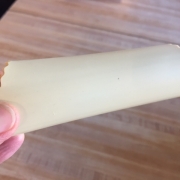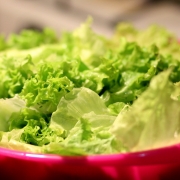How To Cook Kale
Many people know that this leafy green is healthy, but they just don’t know how to cook kale. Or they try to cook it and are not happy with the outcome.
It’s worth learning, because kale is so nutrient-dense and healthy for you. According to the Mayo Clinic, kale is rich in vitamins A, K, B6 and C, calcium, potassium, copper and manganese it contains. One cup of it raw has only 33 calories and only 7 grams of carbohydrate. It also contains a lot of fiber.
Kale is a member of the cruciferous family of veggies, which help prevent cancer. Other veggies in this group include collard greens, broccoli, cauliflower, brussel sprouts, cabbage, arugula, turnips, and radishes.
Here’s a simple way to prepare it. You will need kale, a skillet, olive oil, salt, water, and a few other optional ingredients listed below if desired.
Ingredients:
1 large bunch of fresh kale
1 small onion, diced small
2 T olive oil
Optional, use 1 or more: 2 cloves of garlic, finely diced, 1-2 t fresh ginger root, finely diced, 1 or 2 baby portobello mushrooms, finely diced.
Procedure:
- Pull the greens off the stems. Discard stems.
- Wash kale in a sink full of water. Drain water. If grit is left in the sink, repeat the wash. It might take 2-3 washes if the kale has a lot of dirt on it.
- Heat olive oil in skillet on medium-low. Add onions and optional ingredient(s) if desired. Stir occasionally until the onions are tender.
- Chop up the greens and add to skillet to the top. Add salt to taste.
- Add enough water to have about 1/4″ at the bottom of the skillet.
- Cover and cook on medium heat. Stir occasionally so the kale cooks evenly. As it cooks down, you can add more kale if you initially couldn’t fit it all in the skillet. Add more water as needed.
- Cook until tender (it will be much more digestible than if you only cook it a few minutes and it’s still bright green). When tender, it will still be a nice shade of green, but darker than if lightly cooked.
Possible additions: If you find kale too bitter, you can cook it with a sweet veggie. Once you have the greens in the skillet, add one of the following, diced small, over the kale: beets, sweet potatoes, or butternut squash. Then cover and proceed with step #5 above.
Enjoy your kale and remember to cook kale, other greens, and other crucifereous veggies several times a week for optimal health benefits. Green foods are also especially helpful because they contain chlorophyll. Chlorophyll has a similar structure to hemoglobin, which helps transfer oxygen in the blood from the lungs to the tissues. In addition, green is the color right in the middle of the color spectrum, so it has a balancing effect on the body and mind.










Leave a Reply
Want to join the discussion?Feel free to contribute!